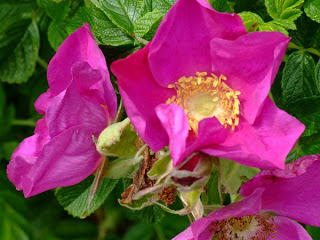 |
| Insect eating birds |
These are bleak times for our native wildlife. Each year the struggle to survive becomes increasingly difficult as mounting odds continue to stack up against them. Over the past 70 years, changes in our farming practices have reduced their natural habitats drastically and Britain’s once abundant sources of food for overwintering species have become ever more depleted. The question is this – are you prepared to tolerate a minimum level of insect damage on your edible and ornamental crops, or would you rather see a continual decline in our native wildlife until we start to see the reality of extinction.
 |
| Insect eating birds |
This isn't about feeding the birds with ever more fancy nuts and berry recipes, or how fancy your ceramic topped seed and nut feeder is because the birds that are attracted to this type of food are not the ones in danger. In fact, populations of seed and nut eating birds have never been better; while the insect eating birds are suffering their worst declines on record.
 |
| Aphids |
In many people's minds insects are the enemy, and while it's true that certain varieties will make your roses look a bit untidy, if you are prepared to work with nature you can always attract the beneficial insects that feed on them.
The most important thing that we can do in our gardens is to stop using blanket insecticides that will kill anything and everything. Chemicals such as brand Provado contain the active ingredient imidacloprid, and although predominantly marketed as a vine weevil killer it will kill most insects that ingest it. What makes it worse is that it can remain active within the plant for up to three months at a time on a single application.
 |
| Jelly slug and slug pellets |
Although there are no figures for the death of native birds, reptiles and mammals through metaldehyde poisoning, the population of every native creature that eats molluscs as part of their diet is either in decline, in serious decline or near to extinction.
If you insist on using insecticide then at least try and stop before the autumn comes, bearing in mind that most of the plants you will be spraying will soon be dropping their leaves anyway. The insects that are causing the small amount of damage at this time of year are the same once that the birds are fattening up on in order to survive the oncoming winter.
 |
| Bee feeding |
To help build up insects populations in your garden is relatively easy and can be dealt with in a number of ways. The most obvious is to practice organic methods which will at least stop the local destruction of insects, but it’s just as important to create the natural habitats that will support insects through each stage of their life cycles.
Planting schemes are vitally important as these can be designed to include a suitable range of plants that can supply nectar throughout the year. Without these, bee, butterflies and other pollinating insects will struggle as they use the nectar as their main source of energy.
 |
| Rosa rugosa blooms |
Not only will they produce flowers and valuable nectar in late autumn, they will also provide berries from winter through to early spring as food for other bird species. If it's berry eating bird you want to encourage then you can't go wrong with planting Cotoneaster, Pyracantha and the mature form of Hedera helix.
If you are considering planting up a hedge, one of the best to choose for the wildlife gardener is the wild dog rose - Rosa rugosa. Not only is this plant known to be able to support over 200 different species of insect, its dense thorny framework of branches also make it ideal for nesting in.
 |
| Wildlife pond |
The reasons why our native insect eating birds are in decline are well documented, but then so are the steps that need to be taken to help reverse them. What needs to happen now is for the country's population to look at their gardens and open spaces and work them with a different ethic in mind. An ethic that doesn't strive for an unnatural pursuit of perfection, but one that benefits not only ourselves but nature at large. If we continue to ignore our place in the environment – particularly as we are now top of the food chain - then it is only a matter of time before the human population goes into decline.
For related articles click onto the following links:
HOW TO CARE FOR INSECT EATING BIRDS OVER WINTER
HOW TO GET RID OF FLIES?
HOW TO GROW PYRACANTHA 'Mohave'
SEED BEARING PLANTS FOR ATTRACTING WILD FINCHES
THE STARLING - Facts







No comments:
Post a Comment